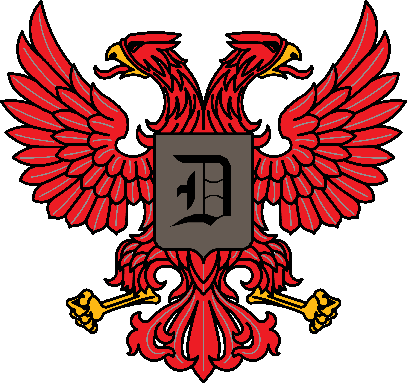

updated 8.3.08
Herein lies the legacy of Brave Dunlops, Warriors all, who fought in World War Two.
Read about perhaps our greatest Warrior: US Medal of Honor winner Captain Robert
Dunlap at Iwo Jima; The Australian national Hero: Ed "Weary" Dunlop in the POW
camps in Burma; Jock Dunlop of Ayr who spent months as POW after airborne
landing at Arnhem, Holland, and Bill Dunlap who was flying a P-51
overhead the same day; Sgt Lloyd Dunlop of the Canadian Special Forces on
Anzio beach; R. L. Dunlap , captured at the Battle of the Bulge in
Belgium; Larry Dunlap, pilot in West Africa and Chief of Staff Canadian
Air Force; USS Dunlap, DD 384 in the Pacific;
and General "Lil" Dunlap in the Philippines, along with many others:
where the ground is hallowed by their blood,
and their actions upon it!
"Merito!"
![]()

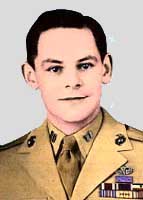 Captain
Robert H. Dunlap On December 18, 1945, Major Robert H. Dunlap, USMCR, then a
captain, was awarded the nation's highest military decoration. President Harry
S. Truman presented him the Medal of Honor in ceremonies at the White House.
Captain
Robert H. Dunlap On December 18, 1945, Major Robert H. Dunlap, USMCR, then a
captain, was awarded the nation's highest military decoration. President Harry
S. Truman presented him the Medal of Honor in ceremonies at the White House.
As Commanding Officer, Company C, 1st Battalion, 26th Marines, 5th Marine Division, during the Iwo Jima campaign, Major Dunlap led his company through a hail of artillery, mortar, rifle and machine gun fire in a determined advance from low ground uphill toward the steep cliffs from where the enemy poured a devastating rain of bullets and shrapnel. It was the day following the original landing in February 19, 1945.
When finally the volume of enemy fire became too intense to advance any further toward the caves located high to the front, Major Dunlap held up his company and crawled alone approximately 200 yards forward of his front lines, while his men watched in fear and admiration.
From this position at the base of the cliff, about 50 yards from the Japanese lines, the major spotted the enemy gun positions, and, returning to his own lines, relayed the vital information to the supporting artillery and naval gunfire units. Persistently disregarding his own safety, he then placed himself in an exposed vantage point to direct a more accurate supporting fire.
Major Dunlap worked without respite for two days and two nights under constant enemy fire, skillfully directing a smashing bombardment against the almost impregnable enemy positions. During this critical phase of the battle, his company suffered heavy casualties, but by his inspiring leadership and indomitable fighting spirit Major Dunlap spurred his men on to heroic efforts which resulted in the final decisive defeat of Japanese countermeasures in that sector.
Previously, during the Bougainville campaign, Major Dunlap, while attached to the 1st Parachute Regiment, was awarded a Letter of Commendation from Admiral William F. Halsey. On December 9, 1943, his platoon was pinned down by heavy Japanese machine gun fire. As platoon leader, Major Dunlap exposed himself to the heavy fire and was able to rally his depleted platoon and maneuver it into position and reoccupy the lost ground. The major's commanding officer said of him at that time, "Apparently a very quiet, retiring personality, this officer demonstrated outstanding qualities of battlefield leadership. Skillful, courageous, and tenacious in adversity."
Robert Hugo Dunlap was born in Abingdon, Illinois, October 19, 1920, the son of William G. and Leona K. Dunlap. He went to school in Abingdon and was graduated from high school there in 1938. While in high school he was active in football, basketball and was a member of the track team. He also took part in the class plays.
He went on to Monmouth College at Monmouth, Illinois, where he was a prominent football player and trackman. Treasurer of the student body in his senior year, he majored in Economics and Business Administration and minored in Mathematics. He was graduated in May, 1942 with a degree of Bachelor of Arts.
Five feet six inches tall, weighing 148 pounds, he enlisted in the Marine Corps on March 5, 1942 while still a student at Monmouth. He was 19 years of age. He was promoted to private first class at that time and was placed on the inactive list with the Platoon Leaders' Unit of the 9th Reserve District until his graduation.
Called to active duty in May 1942, he was transferred to the Candidate's Class at Quantico, Virginia. He was discharged as an enlisted man on July 17, and received his second lieutenancy the following day.
Following Reserve Officers Class at Quantico, Major Dunlap requested parachute training and was ordered to the Parachute Training School at Camp Gillespie, San Diego, California. He was designated a Parachutist on November 23, and the next month was assigned to the 3d Parachute Battalion.
Advanced to first lieutenant in April 1943, he took part in the invasions of Vella LaVella and Bougainville in the Solomon Islands during the latter part of 1943.
Major Dunlap returned to the United States in March, 1944, to join the 5th Marine Division then being formed at Camp Pendleton, Oceanside, California. The veteran officer became a machine gun platoon leader in Company G of the 3d Battalion, 26th Marines.
He departed for overseas for the second time in the summer of 1944, and on October 2, 1944, was promoted to captain. With his new rank he became Commanding Officer, Company C, 1st Battalion, 26th Marines, in which capacity he was serving when he won the Medal of Honor at Iwo Jima.
On February 26, 1945, Major Dunlap was felled by a bullet wound in the left hip. He was evacuated from Iwo Jima and subsequently was a patient at the U.S. Naval Hospitals at Guam, Pearl Harbor, San Francisco, and Great Lakes, Illinois. Hospitalized for nearly 14 months, Major Dunlap was discharged from the Great Lakes Naval Hospital on April 20, 1946. He went on inactive duty in September 1946, and was retired with his present rank on December 1, 1946.
In addition to the Medal of Honor and Letter of Commendation with Ribbon, Major Dunlap holds the Purple Heart, Presidential Unit Citation with one Star, American Campaign Medal, Asiatic-Pacific Campaign Medal with four Bronze Stars, and the World II Victory Medal.
Robert Dunlap passed away Friday, 24 March 2000. He was 79.
![]()
Major Alastair Dunlop, who has died aged 85, was awarded the MC and Bar while serving with the Bombay Grenadiers in the Burma campaign.
On February 1 1945, A Company 3rd Battalion 4th Bombay Grenadiers, commanded by Dunlop, then a major, dug in across the Irrawaddy from Kyaukmyaung and held the bridgehead. During the subsequent advance to relieve Yeshin, the company was protecting a squadron of the 150th Regiment Royal Armoured Corps when the Japanese managed to get within range of the tanks and inflicted heavy casualties..
At one point, Dunlop seized a Bren gun from a wounded man and, without any regard for his own safety, engaged the enemy while the casualties were evacuated; not a single Japanese was able to close with the tanks and destroy them. For his gallantry and skilful handling of his company, he was awarded an immediate MC.
Ottis Dunlap served 7 years in the US Navy during World War II in the Atlantic and Pacific theatres of war. He was involved in the invasion at Normandy and numerous amphibious Pacific Island assaults. He was also a "Plank Member" of the USS Coral Sea. His ship was anchored in Tokyo Bay, as he observed from a distance the surrender of Japan upon the deck of the USS Missouri. On his return trip to the US, his ship was re-directed to a remote part of the South Pacific where he observed an Atomic test. We are also in possession of a military (officially date stamped by the US) photo of the Enola Gay as it sat on an airstrip on one of the islands in the Pacific where my dad was granted shore leave. (submitted by his son, Jerry L. Dunlap of Tampa)
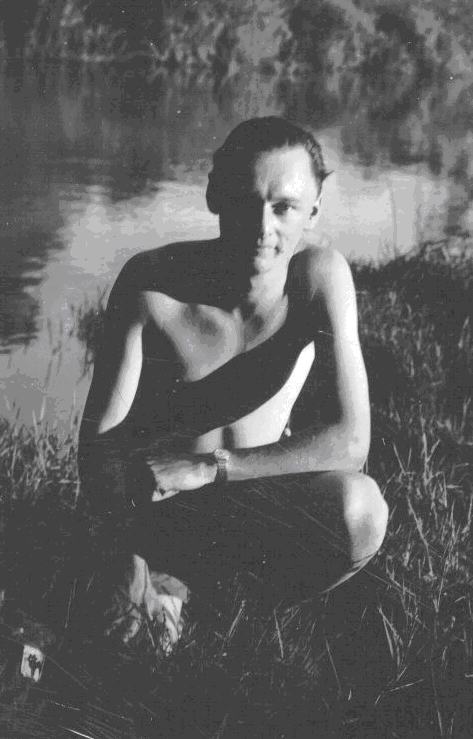
Keith Stuart Wallace Dunlop, 29th of that Ilk, served in Burma with the 14th Army and the Gurkhas.
Dermott
Dunlop (1898-1980), Major General UK
Andrew Dunlop , Brigadier General UK ,Commanding Officer 146th Brigade, North-West Europe 1944
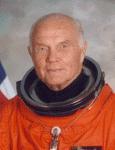 -John Glenn
(July 18, 1921-), American astronaut, pilot. A retired Marine Colonel, John
Glenn has been awarded the Distinguished Flying Cross on six occasions, and
holds the Air Medal with 18 clusters for service during WWII and Korea. He has
won many awards and medals, almost too numerous to list. His signature
accomplishment remains his piloting the Mercury-Atlas 6 "friendship 7"
spacecraft on the first manned orbital mission on Feb 20, 1962. He also flew in
the STS-95 "Discovery" shuttle mission on Oct 29-Nov 7, 1998. He is descended
from the Dunlaps through his maternal grandmother.
-John Glenn
(July 18, 1921-), American astronaut, pilot. A retired Marine Colonel, John
Glenn has been awarded the Distinguished Flying Cross on six occasions, and
holds the Air Medal with 18 clusters for service during WWII and Korea. He has
won many awards and medals, almost too numerous to list. His signature
accomplishment remains his piloting the Mercury-Atlas 6 "friendship 7"
spacecraft on the first manned orbital mission on Feb 20, 1962. He also flew in
the STS-95 "Discovery" shuttle mission on Oct 29-Nov 7, 1998. He is descended
from the Dunlaps through his maternal grandmother.

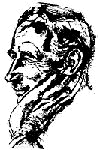 -
Sir Edward "Weary"
Dunlop (1908-1993)An Australian Army Surgeon who was famous for treating
soldiers in Japanese POW camps in Indonesia during WWII. His care for soldiers
in Burma building a 420 kilometer railway under extreme conditions made him a
legend in Australia. He was Knighted in 1969 for his contributions to medicine.
More than 10,000 people lined the streets of Melbourne for the State funeral of
the "Surgeon of the Railway" in 1993. Australian 50 cent coin with
Dunlop.
-
Sir Edward "Weary"
Dunlop (1908-1993)An Australian Army Surgeon who was famous for treating
soldiers in Japanese POW camps in Indonesia during WWII. His care for soldiers
in Burma building a 420 kilometer railway under extreme conditions made him a
legend in Australia. He was Knighted in 1969 for his contributions to medicine.
More than 10,000 people lined the streets of Melbourne for the State funeral of
the "Surgeon of the Railway" in 1993. Australian 50 cent coin with
Dunlop.
Weary Dunlop
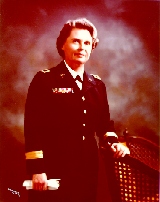 -
Brigadier General Lillian Dunlap
Beginning her career as an Army nurse in 1942 as a second Lieutenant, Lillian
retired in 1975 as a Brigadier General in the US Army. Ms Dunlap served as the
Chief of the Army Nursing Corps in 1971 and is only the second woman to serve as
a Brigadier General, receiving her stars from the legendary General William
Westmoreland. Among her war time assignments, she served at the 59th Station
Hospital, New Guinea, Admiralty Islands and Philippine Islands from 1943-1945.
These were some of the 'hot spots' during World War II. Other overseas
assignments were in Germany in 1954-57 and as Chief Nurse in Okinawa 1965-66.
-
Brigadier General Lillian Dunlap
Beginning her career as an Army nurse in 1942 as a second Lieutenant, Lillian
retired in 1975 as a Brigadier General in the US Army. Ms Dunlap served as the
Chief of the Army Nursing Corps in 1971 and is only the second woman to serve as
a Brigadier General, receiving her stars from the legendary General William
Westmoreland. Among her war time assignments, she served at the 59th Station
Hospital, New Guinea, Admiralty Islands and Philippine Islands from 1943-1945.
These were some of the 'hot spots' during World War II. Other overseas
assignments were in Germany in 1954-57 and as Chief Nurse in Okinawa 1965-66.
General Robert Horace Dunlop 1886-1970 Director of Civilian Personnel Division, Office of the Adjutant-General US Army
Lt Col. George D Dunlop, The Royal Scots OBE (MBE) MC won the MC in Palestine circa 1938, and served Hong Kong, Burma with the 77th Indian Infantry Brigade in 1943 Chindits, Greece, Berlin, Korea, Malaya and places too numerous to mention. (submitted by proud son Peter Dunlop)
Captain David Kennedy Buchanon-Dunlop, Royal Navy. (1911-1985) awarded the DSC. He was involved at Dunkirk evacuation and in the English Channel as senior observer. He took part in anti-submarine patrols and bombing strikes in Madagascar in May 1942. He survived the bombing of HMS Indomitable during Operation Pedastal to Malta in Aug 1942. He served on HMS Indefatigable against the German battleship Tirpitz July 17, 1944. Captain Dunlop also served on the British Delegation at the Nuremberg Trials .
John David Dunlop was born in Cleburne, Texas, a railroad town south of Fort Worth. But in 1927 at age 3, he flew in his uncle's biplane. From then on, Dunlop had a love affair with flight. An Eagle Scout, Dunlop graduated from high school and then joined the Marine Corps in 1942. As a fighter pilot, he flew more than 100 missions in two South Pacific campaigns ó the Marshall Islands and the Western Caroline and Peleliu islands. In 1946 he met and married Eleanor Jane Field, also a Marine, who had learned to fly at 16. His wife of 56 years lives in Tucson. He also was an aerial photographer in the Korean War before becoming a test pilot for a number of aircraft and the Lunar Lander. His 20-year military career included two Distinguished Flying Crosses, a Silver Star, Purple Heart and Air Medal with two gold stars. John David Dunlop died April 4, 2003.
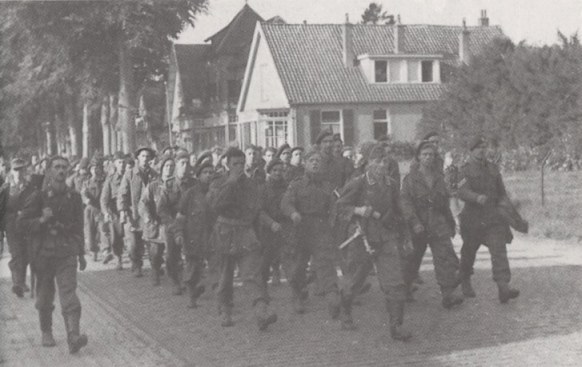 Private John Edmund (Jock) Dunlop b24 July 1920 Originally from Ayr, John
enlisted into the British Army in 1942, even though protected by his occupation:
shipyard welder. Married to Janet Patterson, he joined 3rd Parachute Battalion
"B" Company, 1st Airborne Division after training with the King's Own Scottish
Borderers. After only two weeks training he made his first jump into Bone, North
Africa and marched and fought through that campaign. During the Battle for
Sicily in 1943, he jumped at Pegasus Bridge. At the Battle of Arnhem, Holland on
sept 9, 1944 he jumped in with the 1st Airborne to hold the bridge until the
Allies caught up and took over. The detail was supposed to last 48 hours, but
the relieving tanks never came. After eight days and thousands lost, very few of
his company were still alive, and only 28 made it back over the Rhine. John,
although being wounded, did make it back only to be captured by the Germans. He
was placed in Stalag 11B, then at Saltzgitter Work Camp, then at Stalag 21
outside of Hanover, where he was finally liberated after eight months in
captivity by Americans. A true Scot, he kept a book of Robert Burns songs during
his ordeal. John spent six weeks in hospital recovering from his wounds before
coming home to a loving wife and the admiration of fellow Brits. (submitted
along with letters and telegrams by his proud daughter, Georgina Dunlop Doherty)
Private John Edmund (Jock) Dunlop b24 July 1920 Originally from Ayr, John
enlisted into the British Army in 1942, even though protected by his occupation:
shipyard welder. Married to Janet Patterson, he joined 3rd Parachute Battalion
"B" Company, 1st Airborne Division after training with the King's Own Scottish
Borderers. After only two weeks training he made his first jump into Bone, North
Africa and marched and fought through that campaign. During the Battle for
Sicily in 1943, he jumped at Pegasus Bridge. At the Battle of Arnhem, Holland on
sept 9, 1944 he jumped in with the 1st Airborne to hold the bridge until the
Allies caught up and took over. The detail was supposed to last 48 hours, but
the relieving tanks never came. After eight days and thousands lost, very few of
his company were still alive, and only 28 made it back over the Rhine. John,
although being wounded, did make it back only to be captured by the Germans. He
was placed in Stalag 11B, then at Saltzgitter Work Camp, then at Stalag 21
outside of Hanover, where he was finally liberated after eight months in
captivity by Americans. A true Scot, he kept a book of Robert Burns songs during
his ordeal. John spent six weeks in hospital recovering from his wounds before
coming home to a loving wife and the admiration of fellow Brits. (submitted
along with letters and telegrams by his proud daughter, Georgina Dunlop Doherty)
As the 357th Fighter Group pilot "Lt. W.R. Dunlop, spare on mission separated from group on West Frisian Islands. With his gyro out, Lt. Dunlop got lost in the clouds and when he finally found his bearings, he was over Christiansan harbor in Norway. He strafed three seaplanes at 1045 anchored in the harbor, damaged a DO 24. He then took heading for nearest land and landed at Crail, Scotland at 1630."
two days later, he was aloft with the rest of the group over the airborne landing at Arnhem. Here he shot down an ME 109 and another the next day. He scored a total of four victories before he was shot down on "The Big Day" - 14 January, 1945, and spent the remaining few months of the war in a Stalag Luft. Bill says he flew P-51D, 44-15370, named Sally Anne III, Red Letters with Yellow trim just below the exhaust stacks. As best he recalls, his code letters were B6-X. from Jim Anderson
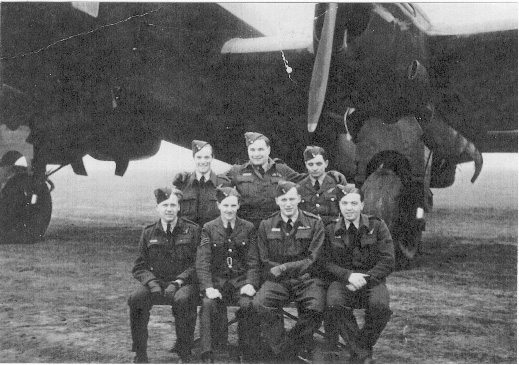 Flight
Sergeant George Steinhauer, Pilot, (centre, back row), Flight Sergeant Lewis
Goodrum (far right back row), Pilot Officer Peter Brown (3rd right front row),
Sergeant James 'Hamish' Dunlop (seated front row
2nd left) The rest of the men are, as yet, unidentified but it's believed that
they are the crew lost onboard W1015 TL-P.
Flight
Sergeant George Steinhauer, Pilot, (centre, back row), Flight Sergeant Lewis
Goodrum (far right back row), Pilot Officer Peter Brown (3rd right front row),
Sergeant James 'Hamish' Dunlop (seated front row
2nd left) The rest of the men are, as yet, unidentified but it's believed that
they are the crew lost onboard W1015 TL-P.
James "Hamish" B. Dunlop was from Callander, Perthshire, Scotland. see the story of his last flight at Eachdraidh Dunlop W1015 TL-P from Linzie Druce's wonderful site.
Cpl. Harold A. Dunlap,1920-1973, of Parker, Pa. who with brothers John and James served during the war. Hal was attached to the 1539th Army Air Corps and was in the occupation forces in Japan and the Philippines from June through November 1945. He received the Asiatic-Pacific Theater Ribbon w two bronze stars and the Philippine Liberation Ribbon. He said that when he reached Tokyo, only two buildings were standing: the train station and the Imperial Palace! (submitted by his proud sons, Michael and John Dunlap)
Lt. John Francis Dunlap of Parker , Pa was a pilot as indicated in the attached articles. He was scheduled to go to Burma in 1943 before he was blinded by a golf ball. This accident caused him to lose an eye, grounding him before he could fly a mission. His daughter Nancy states that the accident probably saved his life! He was medically discharged. (submitted by Nancy Dunlap Collette) Brother of Harold A Dunlap (above).

Lawrence H. Dunlop at 23. Old 9th Division area, Fort Bragg, N.C. mid May 1942. Original member H-co, 3rd bat. 504 para. inf. reg., 82nd airborne div. Combat jumps, "Sicily, Salerno, and Holland". Made the "suicide" crossing of the Waal river as a member of Julian Cook's daylight assault to take the Nijmegen bridge, A Bridge Too Far. Sicily, Anzio, Salerno, Holland, Belgium, Germany. Resides in Bennington, VT.
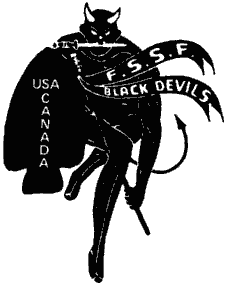 Dunlop,
Lloyd David, Cpl. /Acting Sergeant (F22447) First Special Service Force
(Canadian/American)
Dunlop,
Lloyd David, Cpl. /Acting Sergeant (F22447) First Special Service Force
(Canadian/American)
"Sgt. Dunlop came overseas with this Force, and has not missed one day's combat, or even one day's duty. During all this time he has consistently put forth his most conscientious efforts to do his work in the best way he knew how.
On the Mount Majo operation Sgt. Dunlop spent long hours maintaining communications for his headquarters, manning the telephone and radio, and taking charge when his senior N.C.O. was evacuated. This all took place in snow and extreme cold weather, and under considerable heavy enemy mortar and artillery fire, on a rocky hill where there was little available cover.
On the Anzio Beachhead, Sgt. Dunlop was N.C.O. in charge of communications. The Battalion had a large number of long telephones to maintain, and they were being constantly cut by the heavy enemy artillery fire. During our stay of ninety-nine consecutive days on the beachhead, Sgt. Dunlop did this work very often under difficult conditions, during all times of the day and night, usually in heavy rain, and muddy terrain.
On the push to Rome, Sgt. Dunlop continued his excellent work, taking it upon himself to remain at his post for long hours, sometimes for 24 hours or more at a stretch. On all operations, Sgt. Dunlop had done more than his share of work, and has always carried more than his share of the heavy loads our men carry. He has always been fully aware of his responsibilities, and has worked unceasingly to discharge them cheerfully. He has always been a source of extreme satisfaction to his officers, and has earned their utmost confidence ......"
 Austin
Dunlap Pilot, 350th 100th Bomber group
Austin
Dunlap Pilot, 350th 100th Bomber group
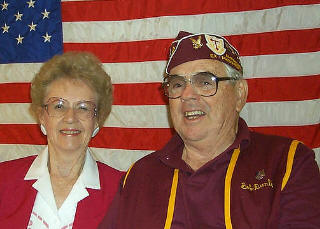 Robert L. Dunlap of Port Richey, FL., a Sergeant in
the U.S. Armyís 28th Division, was 21 when he was captured in Oren, Belgium on
December 17, 1944. Before being liberated by the Armored Forces in April of 1945
Robert spent 4 monthís in campís 1XB and 1XA marching day and night and being
placed in Box Cars that were unknowingly being bombed at by our own planes.
During these marches Robert and others with him would be used as targets for the
German soldiers. While marching they would also be stoned at by younger people.
Robert received many medals including the Purple Heart, the Bronze Medal, the
Good conduct, and many more.
Robert L. Dunlap of Port Richey, FL., a Sergeant in
the U.S. Armyís 28th Division, was 21 when he was captured in Oren, Belgium on
December 17, 1944. Before being liberated by the Armored Forces in April of 1945
Robert spent 4 monthís in campís 1XB and 1XA marching day and night and being
placed in Box Cars that were unknowingly being bombed at by our own planes.
During these marches Robert and others with him would be used as targets for the
German soldiers. While marching they would also be stoned at by younger people.
Robert received many medals including the Purple Heart, the Bronze Medal, the
Good conduct, and many more.
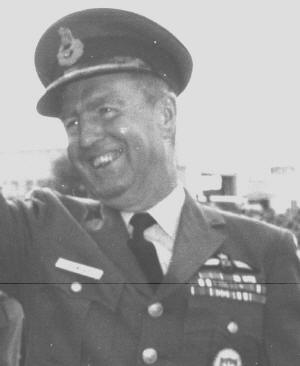 AM C.R. "Larry"
Dunlap, CBE,CD, began his flying career in 1928 operating Vedettes and
Vancouver flying boats. During WW II he commanded #331 Wing (420,424,425 Sqdns)
as part of the West African Strategic Air Force. Post war he served in NORAD,
SHAPE and was the seventh and final Chief of the Air Staff, Canadian Air Force,
before the units were integrated.
AM C.R. "Larry"
Dunlap, CBE,CD, began his flying career in 1928 operating Vedettes and
Vancouver flying boats. During WW II he commanded #331 Wing (420,424,425 Sqdns)
as part of the West African Strategic Air Force. Post war he served in NORAD,
SHAPE and was the seventh and final Chief of the Air Staff, Canadian Air Force,
before the units were integrated.
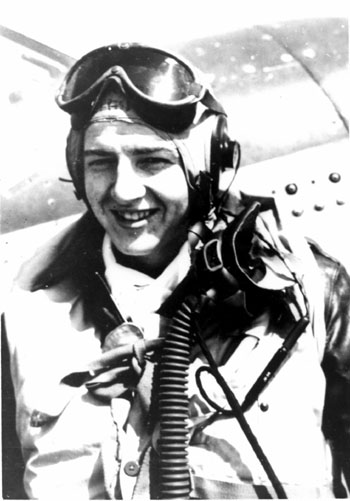
Dunlop of the 362nd Yoxford boys. (from Aaron smith)
![]()
Delapp, Earl L, Pvt, Army. of Ok, died july 28, 1944 359th Inf, 90th Div
Delap, James R, PM3C, USN, of IL, MIA Mar 19, 1945
The Delap Collection ; Jack Delap completed a combat tour as bombardier with the original Kinsinger crew of the 711th Squadron from December 1943, and then returned to Rattlesden for a second tour of duty. The following photographs, kindly provided by Delap's sons, give a special insight into life at Rattlesden, and were taken sometime after August, 1944. The photographs were recently discovered as three rolls of negatives. Many of the personnel and locations shown in this collection remain unidentified. E-mail david@447bg.com with any additional information you might be able to provide.
F/Lt. J.Dulop-Urie flew with
No 602
Squadron during the Battle of Britain. On the 18th of August 1940 he was
flying a brand new Spitfire (X4110) which was damaged beyond repair in a fight
with a Bf 109 from III Gruppe of JG 27 near Bognor at 14:35hrs. He landed the
aircraft at Westhampnett, he was wounded in the legs.
![]()

 Ottis
Dunlap served 7 years in the US Navy during World War II in the Atlantic and
Pacific theatres of war. He was involved in the
invasion at Normandy
and numerous amphibious Pacific Island assaults. He was also a "Plank Member" of
the USS Coral Sea.
His ship was anchored in Tokyo Bay, as he observed from a distance the surrender
of Japan upon the deck of the USS Missouri. On his return trip to the US, his
ship was re-directed to a remote part of the South Pacific where he observed
an Atomic test.
We are also in possession of a military (officially date stamped by the
US) photo of the Enola Gay as it sat on an airstrip on one of the islands in the
Pacific where my dad was granted shore leave. (submitted by his son, Jerry L.
Dunlap of Tampa
Ottis
Dunlap served 7 years in the US Navy during World War II in the Atlantic and
Pacific theatres of war. He was involved in the
invasion at Normandy
and numerous amphibious Pacific Island assaults. He was also a "Plank Member" of
the USS Coral Sea.
His ship was anchored in Tokyo Bay, as he observed from a distance the surrender
of Japan upon the deck of the USS Missouri. On his return trip to the US, his
ship was re-directed to a remote part of the South Pacific where he observed
an Atomic test.
We are also in possession of a military (officially date stamped by the
US) photo of the Enola Gay as it sat on an airstrip on one of the islands in the
Pacific where my dad was granted shore leave. (submitted by his son, Jerry L.
Dunlap of Tampa
Dunlap, Alfred R, PVT, Army, of Louisiana Died Oct 10, 1944 350th Inf. 88th Div
Dunlap, Alwayne M, 2 LT AAF, of DC, died feb 21, 1944 99th Fighter Sq. 332nd group.
Dunlap, Calvin C, Seaman 2nd Class, USN, of TX, died Sept 4, 1943
Dunlap Charles E. TEC4 Army, of WV died May 3, 1945, 10th inf. 5th Div
Dunlap, Charles E. PFC Army, of NV, died July 4, 1945 34th Reg, 24th Inf Div.
Dunlap, Charles L, Pvt Army, of KS, died Feb 20,1945 9th Inf 2nd Div
Dunlap, David R LT/JG, USNR of AL, died March 19, 1945
Dunlap, Frederick, W 1stLT, AAF, of MO., died Oct 6 1943, awarded DFC and Air Medal,69th Bomber Sq, 42nd Grp.

Dunlap, George H IV, PVT Army, of AL, died Aug 17,1944 , 141 Inf, 36 Inf Div
Dunlap, Gerald H, TEC4 , AAF, died July 9 1942, HQ Sn. 20th Air Group
Dunlap, Harold, TSGT, AAF, of PA, died May 23, 1942, 3rd Pursuit Sn, 24th Grp.
Dunlap, Humbird, JR, PVT of WV, died Jun 11 1944, 3199 fighter Sn, 325th Grp
Dunlap, James T, MOMM1c, USN, of AL, died Dec 13, 1945
Dunlap, Merle F, Sgt, Army, of PA. died Jun 22 1942, Signal Corps
Dunlap, Paul, P, TEC5, AAF, of KY, died Sep 5 1945, HQ 307 Bomber Grp
Dunlap, Riley W Jr, PFC, Army, of AL, died Mar 3 1945, 310 Inf, 78th Div.
Dunlap, Robert A TSGT, AAF,of Cal.died Nov 9, 1944, 729 Bomber Sn, 452 Bomber Grp.
Dunlap, Robert C, PFC, Army, of NY, died Dec 16 1944, 424 Inf, 106 Div.
Dunlap, Robert W, PFC, Army, of ND, died Mar 22, 1945, 162 Inf, 41 Div
Dunlap, Ruben W, PVT, Army. of OK, died Mar 25 1943, awarded Silver Star, 91st Artillery, 1st Armored Div.
Dunlap, William A, SK2C, USNR, of PA, died Mar 19, 1945
Dunlap, William L, TSGT, AAF, of PA, died Feb 26, 1943, 1st Sn, 480th antisub Grp.
Dunlap, Winfred L, PFC, Army, of Miss.died Jan 26, 1944, 83rd Chemical Bn
![]()
Dunlop, Alfred S, PVT Army, of MD, died feb 14, 1944, 168th Reg 34th Inf Div
Dunlop, John, 2ndLT, AAF, of Va, died aug 15, 1944, 757 Bomber Sn, 459th Bomber Grp
Dunlop, Robert, TSGT, Army, of DC, died Aug 2, 1944, 175th Inf, 29th Inf Div
![]()
